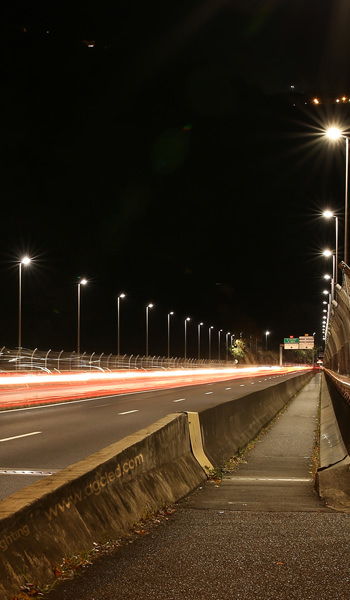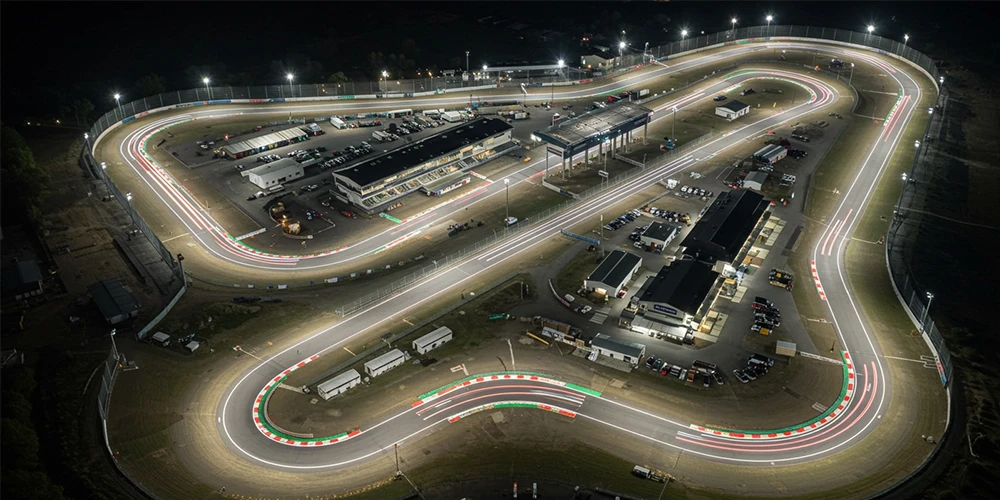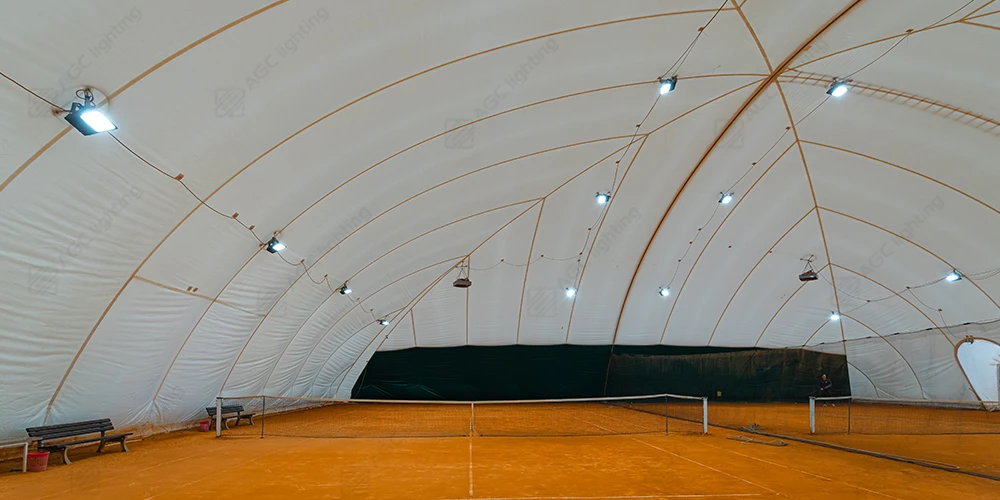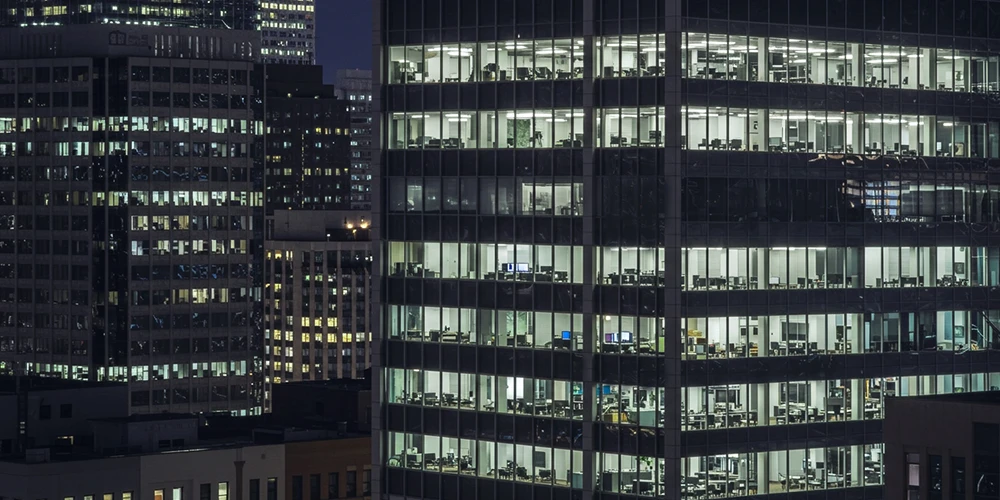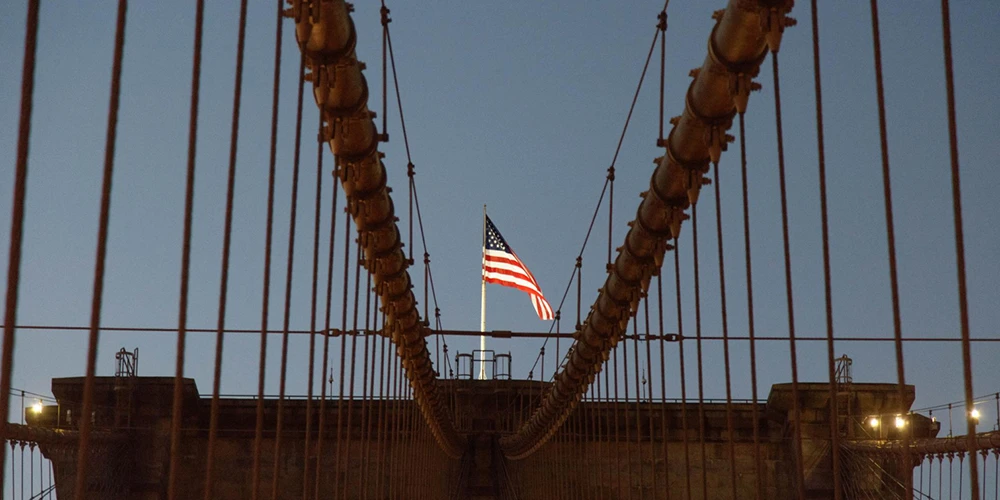Motor racing is inherently dangerous due to its high speeds and intense competition. These risks increase even more when races take place in the dark. So, proper lighting is crucial to maintaining safety in such a high-speed environment.
Racetrack lighting must meet the demanding needs of motorsports. It should help drivers navigate sharp corners at incredible speeds, allow marshals to respond immediately to any incidents, and ensure every inch of the track is clearly visible. This not only enhances performance but also ensures the highest level of safety for everyone involved.
Lighting is Essential on the Racetrack
Motor racing is known for its incredible speed. But just how fast can it go? The highest speeds can reach up to 378 kilometers per hour (about 235 mph). At such extreme speeds, even a small issue like a shadow, glare, or a poorly lit area can be extremely dangerous for drivers.
This is why racetrack lighting needs to be powerful, consistent, and wide-reaching. It must cover miles of track, including pit lanes and paddock areas, ensuring every section is clearly visible. The challenge becomes even greater because the objects being lit are moving at incredible speeds. Lighting must provide excellent forward visibility and allow drivers’ eyes to adapt quickly as they move through different lighting conditions on the circuit.
Safety also involves protecting the lighting equipment itself. At high speeds, a car could hit a light pole or fixture. Such impacts can cause serious damage and make the situation even more dangerous. To prevent this, lighting fixtures must be installed securely and positioned carefully to reduce the risk of being hit or falling.
Weather conditions make things even more challenging. Rain can turn the surface of the track into a reflective mirror, which creates dangerous glare. Fog requires specific lighting angles to maintain visibility without causing confusion or light scattering. High humidity can affect how well the lights perform and how long the fixtures last.
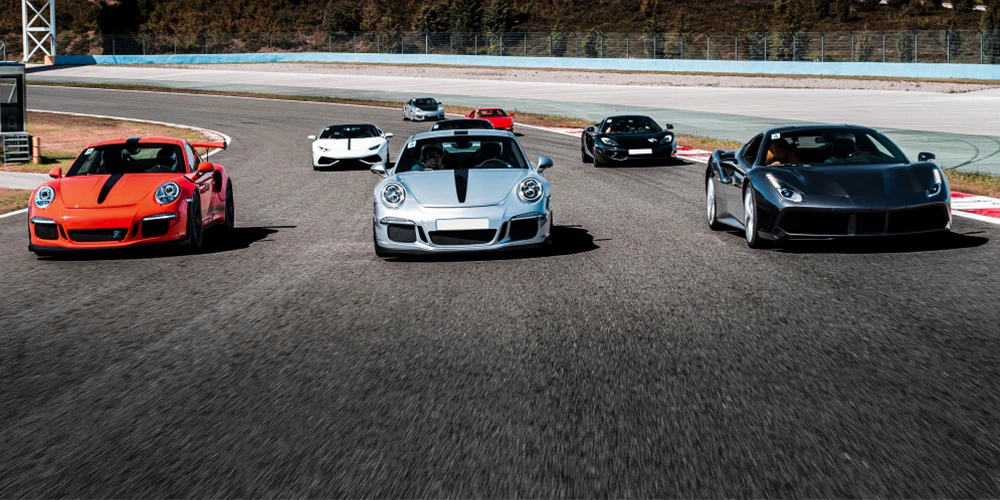
Key Factors in Racetrack Lighting
How does racetrack lighting ensure both speed and safety?
To understand this, let’s start with the core principles behind effective racetrack lighting:
- Reduce the risk of injury or accidents involving drivers, officials, and spectators
- Prevent glare or disorientation that could impair a driver's vision
- Avoid any part of the track being plunged into darkness during a race
- Ensure high-quality lighting that allows drivers and officials to make quick and accurate visual decisions in high-speed conditions
How can these goals be achieved?
The following key factors must be considered:
Sufficient Lighting
Adequate lighting is fundamental for any racetrack. The required light levels depend on both the size of the track and the level of competition being held. For example, the FIM standards for track racing circuits specify that lighting must ensure clear, uniform visibility across the entire racing surface. There should be no shaded areas, and the lighting must deliver a minimum of 200 lux measured at the track surface.
Similarly, the Western Australian Speedway Commission recommends that racetracks be evenly lit to a standard of 200 lux, with no point on the track falling below 100 lux.
Accurate Color
Accurate color rendering is essential for ensuring clear visibility and correct color perception by drivers. It is also critical for race control systems, broadcast cameras, and emergency medical personnel. To achieve accurate color, both the CRI and CCT must be taken into account.
For HD broadcasting, the lighting system should have a CRI above 90 to ensure accurate and consistent color recognition. For general purposes, a CRI of 80 is considered acceptable.
When races begin in the late afternoon and extend into the evening, a CCT between 4000K and 5000K is recommended to maintain a natural lighting transition. However, for events held entirely under artificial lighting, a cooler temperature around 6000K is preferred for optimal visibility.
Minimizing Glare and Shadows
A good lighting system should not create dark or harsh shadows on the track or nearby structures. It should also avoid casting long shadows across the track that could affect visibility for drivers.
Glare and shadows are affected by how bright the lights are, how the light is spread, and where the lights are installed. First, avoid using too much light, use the right amount based on the type of race. Then, choose lights with the right beam spread and place them at the right height and angle to reduce glare and shadows.
The type of track surface also matters. Dirt tracks absorb more light, while concrete reflects it, which can cause more glare. It's important to reduce these reflections as much as possible.
Designing an optimal lighting setup can be complex, so it's best to consult our lighting expert for accurate simulations and tailored solutions.
Proper Placement
Proper placement of lighting fixtures is important not only for achieving effective lighting but also for ensuring safety. By positioning the lights strategically, it's possible to get the best lighting coverage using fewer fixtures, helping to reduce both energy use and installation costs.
However, placement is also a key safety consideration, which is sometimes overlooked. Racing involves high speeds and carries a risk of accidents. To avoid hazards, lighting poles must not be installed within three meters of the safety fence unless they are properly protected.
Durable to Weather and Accidents
Lighting systems used on racetracks must be built to withstand both environmental conditions and the risks associated with high-speed events.
The lighting system should be designed to remain functional and safe under the following conditions:
- Impacts from on-track accidents
- Water exposure due to heavy rain or firefighting equipment
- Minor collisions from maintenance vehicles or equipment near lighting structures
Fixtures should be made from materials that do not pose a fire or pollution hazard in the event of an accident. They must also resist damage from exposure to race fuels, fire suppression agents, and cleaning chemicals, ensuring continued safety and performance.
Additionally, in line with UCI cycling regulations, the lighting setup must include an emergency system that operates independently of the main power supply. This backup lighting must activate instantly and provide at least 100 lux of illumination for a minimum of five minutes to ensure visibility and safety during a power outage.
Case study: Dubai Autodrome Lighting
AGC has extensive experience in industrial and outdoor lighting solutions.
One of our clients required a customized lighting solution for the Dubai Autodrome. As shown in the images, the goal was to illuminate two key areas of the track: the oval access and the hill access. The plan involved installing lighting poles in the gravel zones, with mounted fixtures to ensure optimal visibility on the tracks.
Project requirements were as follows:
Pole height: 18–20 meters
Distance between poles: Approximately 70 meters
Average surface illumination: 80–100 lux
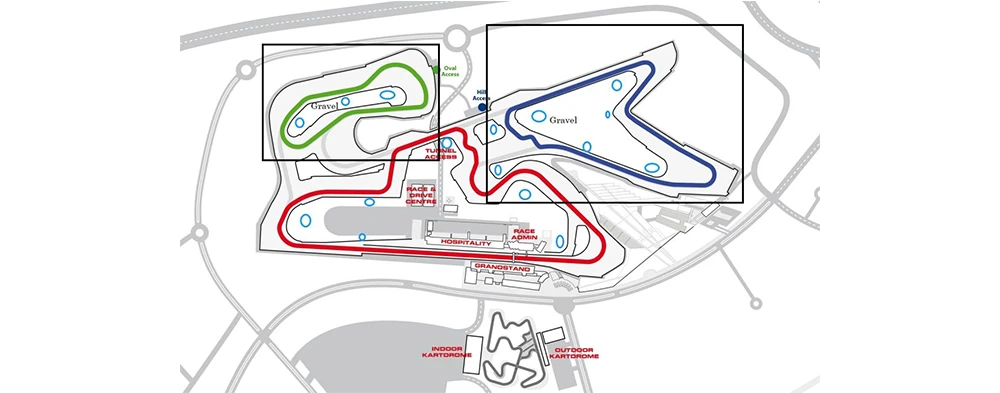
To meet these requirements, we provided a detailed lighting simulation that fully satisfied the client's expectations. The simulation incorporated a total of 154 SP01 LED sports lights. The results were impressive: delivering an average illumination level of 103 lux for the oval access and 99 lux for the hill access.
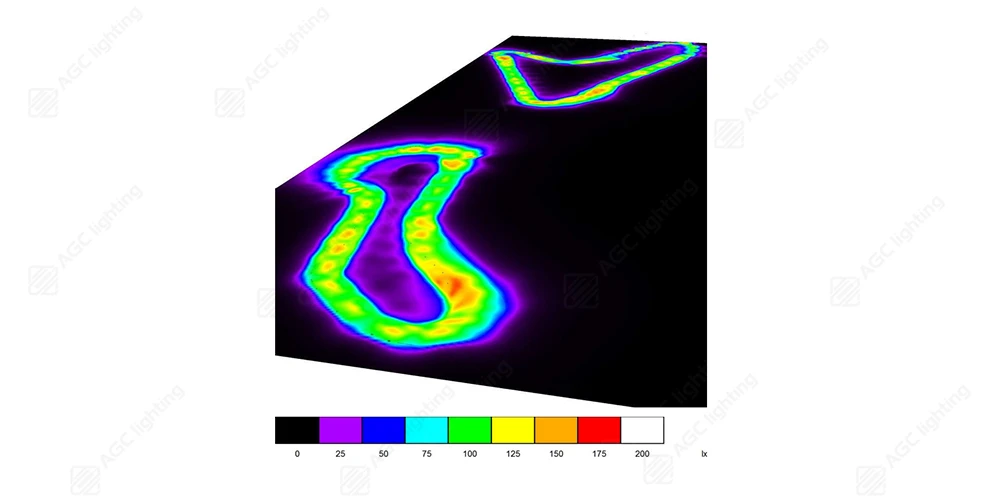
If you need any help with your projects, contact us.

